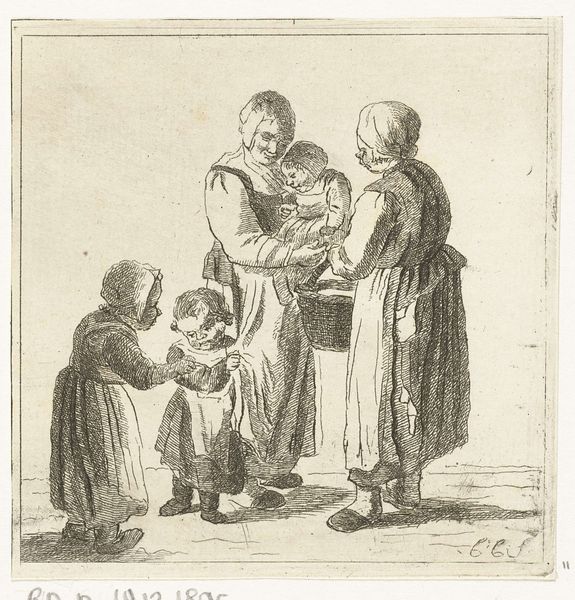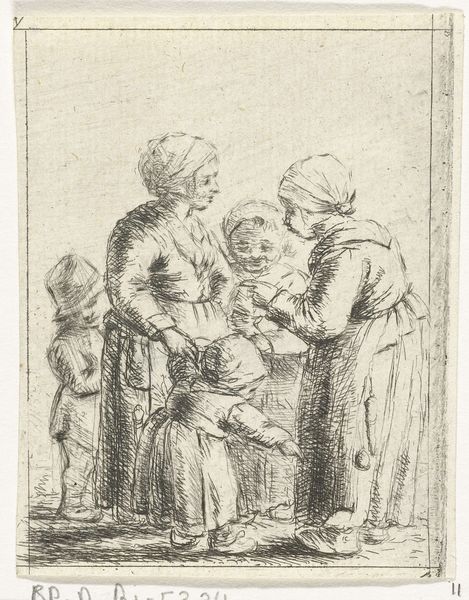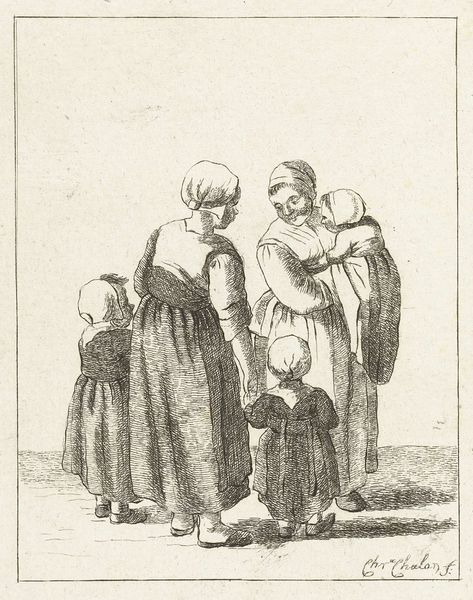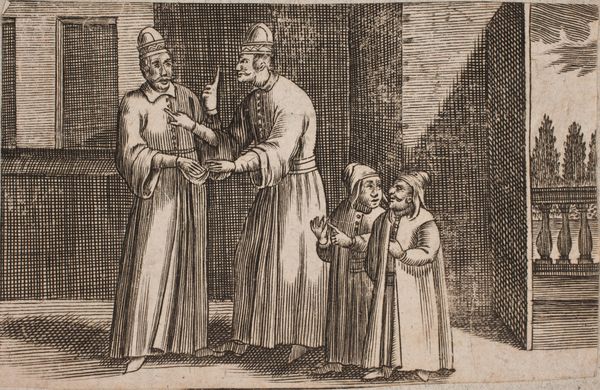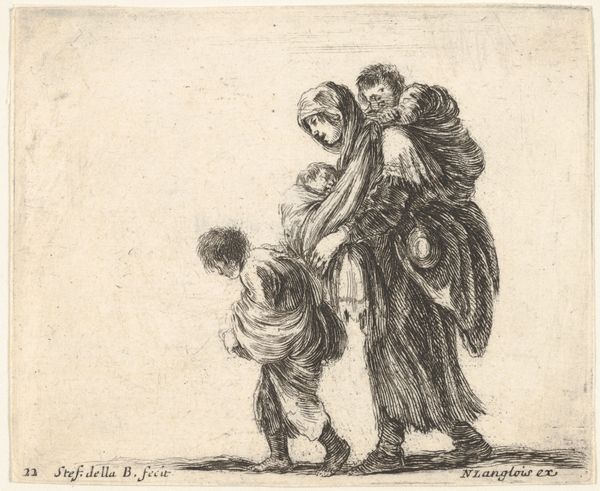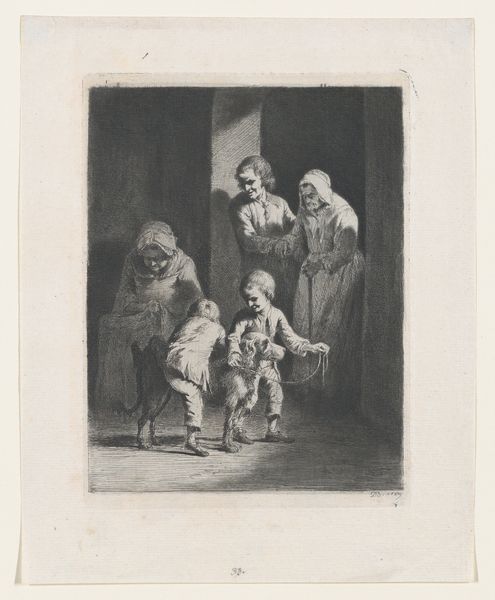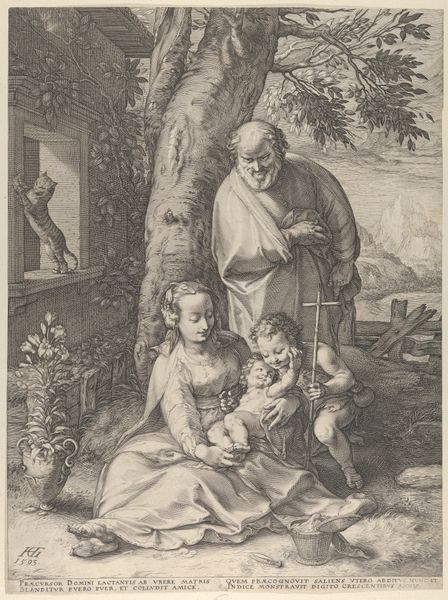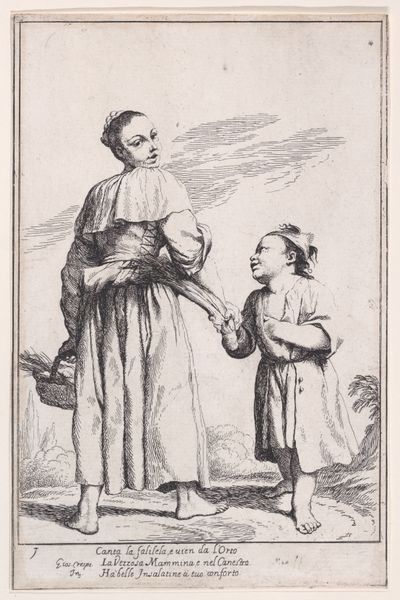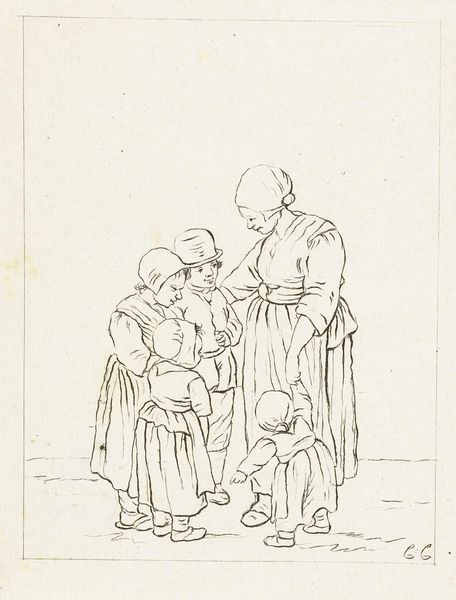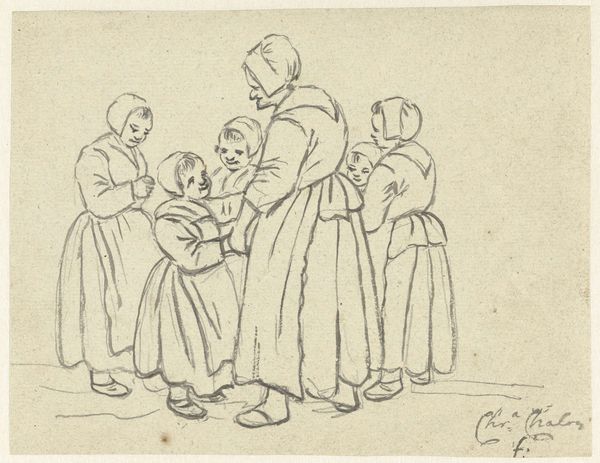
print, engraving
#
narrative-art
#
dutch-golden-age
# print
#
figuration
#
genre-painting
#
engraving
Dimensions: width 94 mm, height 96 mm
Copyright: Rijks Museum: Open Domain
Curator: Looking at this print, “Two Mothers with Their Children,” crafted between 1777 and 1779 by Pieter de Mare, a genre scene of striking intimacy unfolds. Editor: The engraving feels immediately enclosed, almost claustrophobic. The greyish palette emphasizes a stark, candid observation of domestic life, capturing these figures with almost documentary plainness. Curator: Exactly. The Dutch Golden Age aesthetic emphasized this grounding in the everyday, a marked shift towards valuing quotidian life, reflecting rising bourgeois values. It elevates what would otherwise be perceived as mundane tasks, aligning the artistic gaze with that of a growing middle class audience, increasingly eager to see themselves and their social sphere represented in art. Editor: Indeed, but more technically, the artist's delicate engraving brings considerable volume out of simple lines. The varying densities and criss-cross hatchings model fabric and flesh exquisitely. Notice especially how de Mare captures a palpable weightiness in the older woman, with a sagging fullness that renders her undeniably human. Curator: Considering it hangs in the Rijksmuseum, the artwork is quite illustrative of changing views around childhood and family. Depicting children, especially infants, so centrally reflects an emergent societal investment in maternal care and family as pivotal components of civic society, rather than simply familial issues. Editor: Observe the figures are not romanticized—there's an authenticity, an ordinariness that aligns with its period, forgoing theatrical or idealized presentations. Also note the somewhat abrupt crop to the composition, which serves to close in the figures tightly into the pictorial frame. Curator: I agree. These are observations firmly rooted in their temporal reality—offering insight into shifting demographics and perceptions, underscoring its importance beyond mere aesthetic appeal. De Mare allows us a glance into domestic dynamics, the socio-cultural underpinnings of the Dutch citizenry. Editor: I find myself appreciating the composition for its subtle geometry, how the artist manages the positioning of the five figures. Thank you for the cultural context, fascinating as usual! Curator: My pleasure; I always come away learning so much with our art talks.
Comments
No comments
Be the first to comment and join the conversation on the ultimate creative platform.
